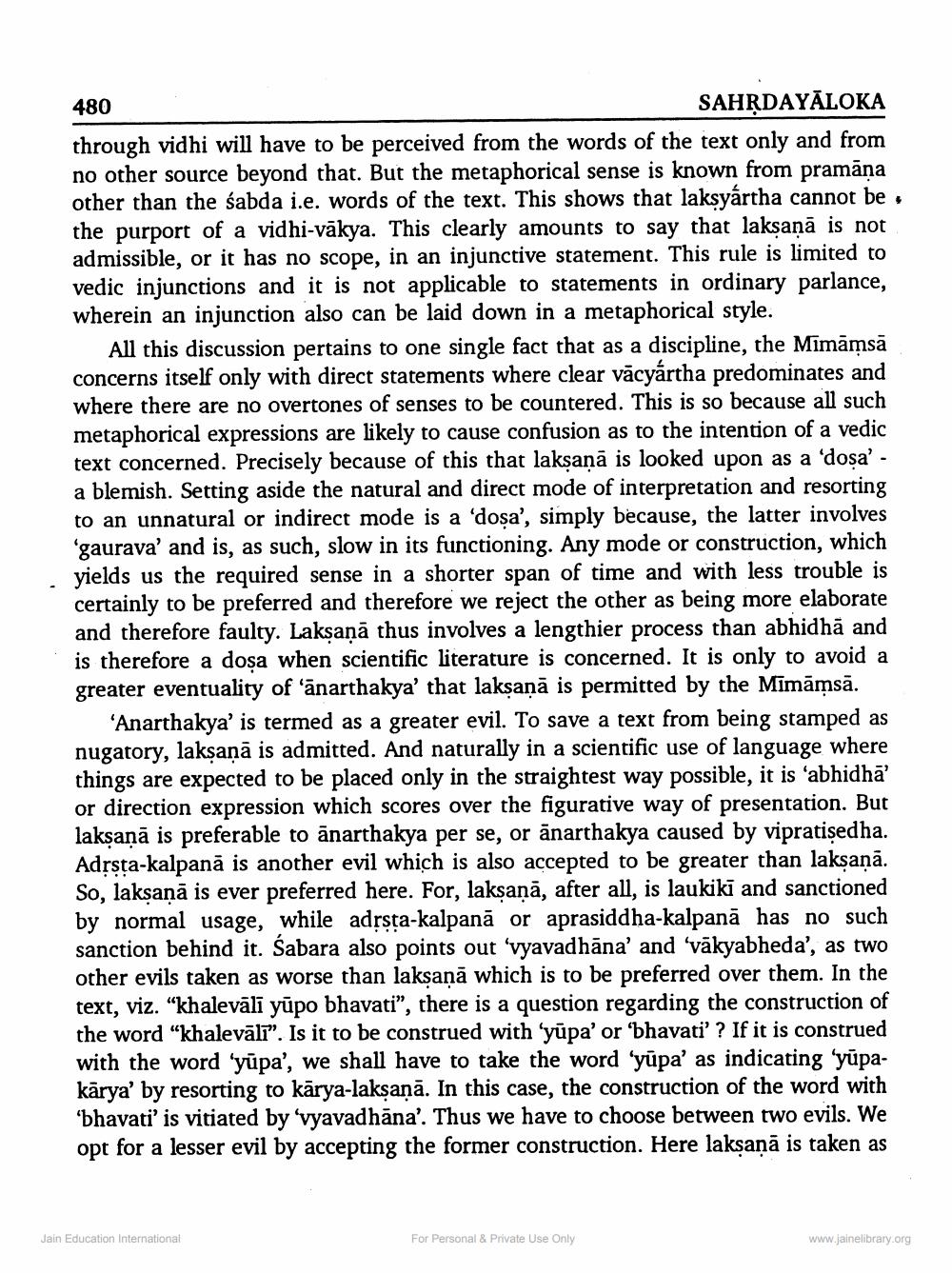________________
480
SAHĶDAYĀLOKA through vidhi will have to be perceived from the words of the text only and from no other source beyond that. But the metaphorical sense is known from pramāna other than the sabda i.e. words of the text. This shows that laksyártha cannot be the purport of a vidhi-vākya. This clearly amounts to say that laksaņā is not admissible, or it has no scope, in an injunctive statement. This rule is limited to vedic injunctions and it is not applicable to statements in ordinary parlance, wherein an injunction also can be laid down in a metaphorical style.
All this discussion pertains to one single fact that as a discipline, the Mimāmsā concerns itself only with direct statements where clear vācyártha predominates and where there are no overtones of senses to be countered. This is so because all such metaphorical expressions are likely to cause confusion as to the intention of a vedic text concerned. Precisely because of this that laksana is looked upon as a 'dosa' - a blemish. Setting aside the natural and direct mode of interpretation and resorting to an unnatural or indirect mode is a dosa', simply because, the latter involves 'gaurava' and is, as such, slow in its functioning. Any mode or construction, which yields us the required sense in a shorter span of time and with less trouble is certainly to be preferred and therefore we reject the other as being more elaborate and therefore faulty. Laksana thus involves a lengthier process than abhidhā and is therefore a dosa when scientific literature is concerned. It is only to avoid a greater eventuality of ‘ānarthakya’ that laksaņā is permitted by the Mimāmsā.
'Anarthakya' is termed as a greater evil. To save a text from being stamped as nugatory, laksana is admitted. And naturally in a scientific use of language where things are expected to be placed only in the straightest way possible, it is ‘abhidha or direction expression which scores over the figurative way of presentation. But lakṣaṇā is preferable to anarthakya per se, or ānarthakya caused by vipratiședha. Adrsta-kalpanā is another evil which is also accepted to be greater than laksanā. So, laksaņā is ever preferred here. For, lakṣaṇā, after all, is laukiki and sanctioned by normal usage, while adrsta-kalpanā or aprasiddha-kalpanā has no such sanction behind it. Sabara also points out 'vyavadhāna' and 'vākyabheda', as two other evils taken as worse than laksanā which is to be preferred over them. In the text, viz. “khalevālī yupo bhavati”, there is a question regarding the construction of the word "khalevālī”. Is it to be construed with 'yūpa' or 'bhavati' ? If it is construed with the word 'yūpa', we shall have to take the word 'yūpa' as indicating 'yūpakārya' by resorting to kārya-laksaņā. In this case, the construction of the word with 'bhavati' is vitiated by ‘vyavadhāna'. Thus we have to choose between two evils. We opt for a lesser evil by accepting the former construction. Here laksanā is taken as
Jain Education International
For Personal & Private Use Only
www.jainelibrary.org




